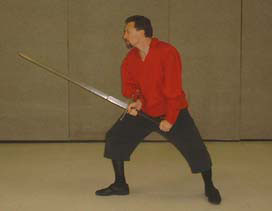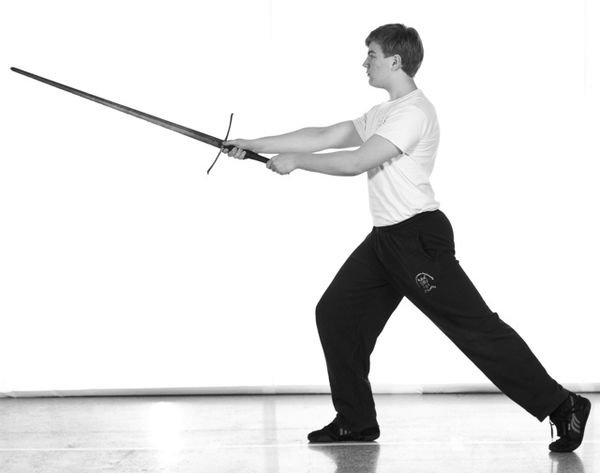This is an interesting question with some pretty complex answers, but the general fencing theory behind it is this:
What stops the opponent from slapping the blade away is simply that a slap/beat is more or less a small cut at an opponent's blade which takes time/tempo. Assuming you start point forward toward your opponent, launching a good cut requires two actions: a raising of the point and a downward strike towards the opponent's blade. In the two actions/tempos of performing the beat, someone in long guard could counter you with a number of actions.
One is a small hand movement downward to evade the beat (what would be called a disengage in rapier) which takes about the same time or can be even quicker than a beat depending on what stance the opponent launches the beat from. The disengage is a primarily defensive action though which puts your point offline so your opponent can't hit it and the only real offensive action that could really follow a disengage within a single tempo would be a quick rising false edge cut or a thrust to the lower torso or legs.
Another counter is riskier, but pushes the offense: assuming both you and your opponent are in long guard, in the tempo/time an opponent launches the raising action of the beat, you could theoretically stab the opponent during the beat if you predict that he will do so since his point is offline and a thrust is simply a tempo of moving the point forward.
Also, having a pointy piece of steel directed at one's throat usually is enough to discourage an opponent from advancing or opening themselves up in general since it is intimidating to people who aren't used to it.
A word of caution though, what I said above is what could be done on a theoretical level. In practice, long guard is not a perfect defense and does have some vulnerabilities; one of which is indeed the opponent slapping/beating the blade away. There are simply times during a sword fight where you may not be perfectly on your game to capitalize on every opening your opponent gives you, there may be times when you "fall asleep at the wheel" so to speak, and there are times when simply your opponent is good at outplaying you and hiding when he will beat your blade. This is where long guard can be a vulnerability since you need to be proactive when using it and not rely on it passively as a perfect defense. It's also a guard that often makes you vulnerable to opponents who like to grappling with or grab the sword.
I would actually argue that the most defensive and "safest" guard to assume that discourages the opponent from advancing via an "I could stab you in the throat" defense isn't actually long guard, but for sword and buckler guards like 6th ward:

Or Ochs:

And for longsword, guards like pflug:

Or posta breve:

Since those guards keep the point on-line while keeping the blade back far enough to prevent strong beating actions from being done to it.
With that said though, I think that long guard is the most preferred guard by a large number of people for a few other reasons other than the "pointiness" of it: First, it's simple and intuitive. Secondly, it's a good balance of offense and defense since the blade is the closest possible to your opponent which makes any attack you launch from it reach your opponent more quickly and allows you to put the blade in the way of an attack more quickly when compared to other stances. Thirdly, it generally makes fencing easier since it's the perfect platform from which to start a bind/initiate blade contact with the opponent and from the bind, try to better predict what your opponent will do next. Long guard isn't perfect by any means, but it's a great guard for both novices and experts to fence from and something that shouldn't be carelessly "slapped" at. :P





